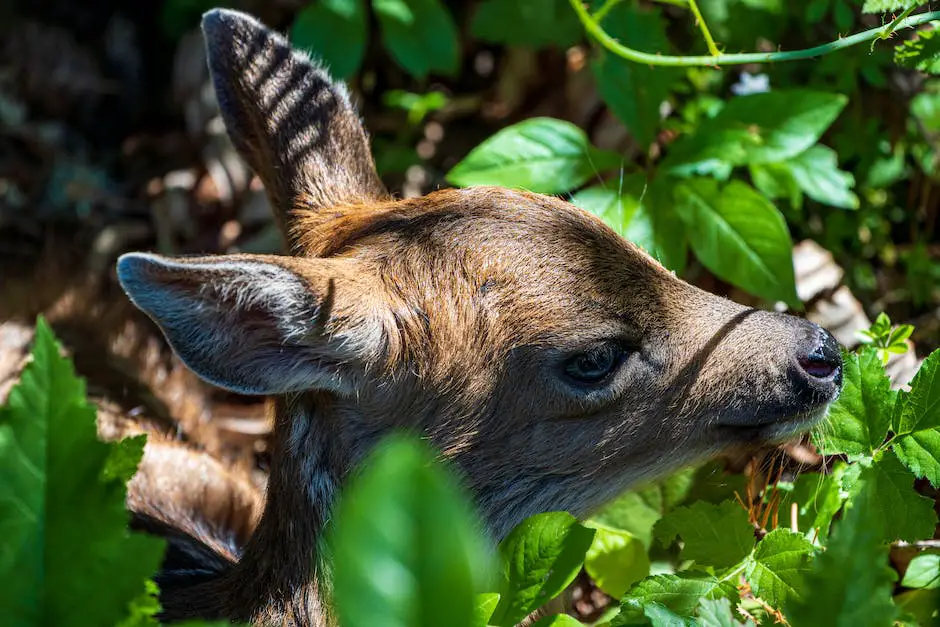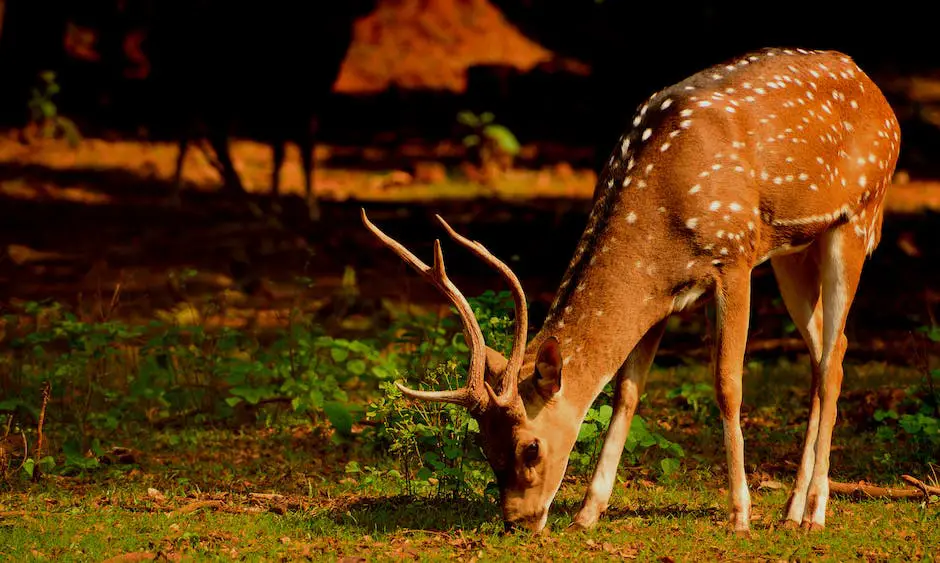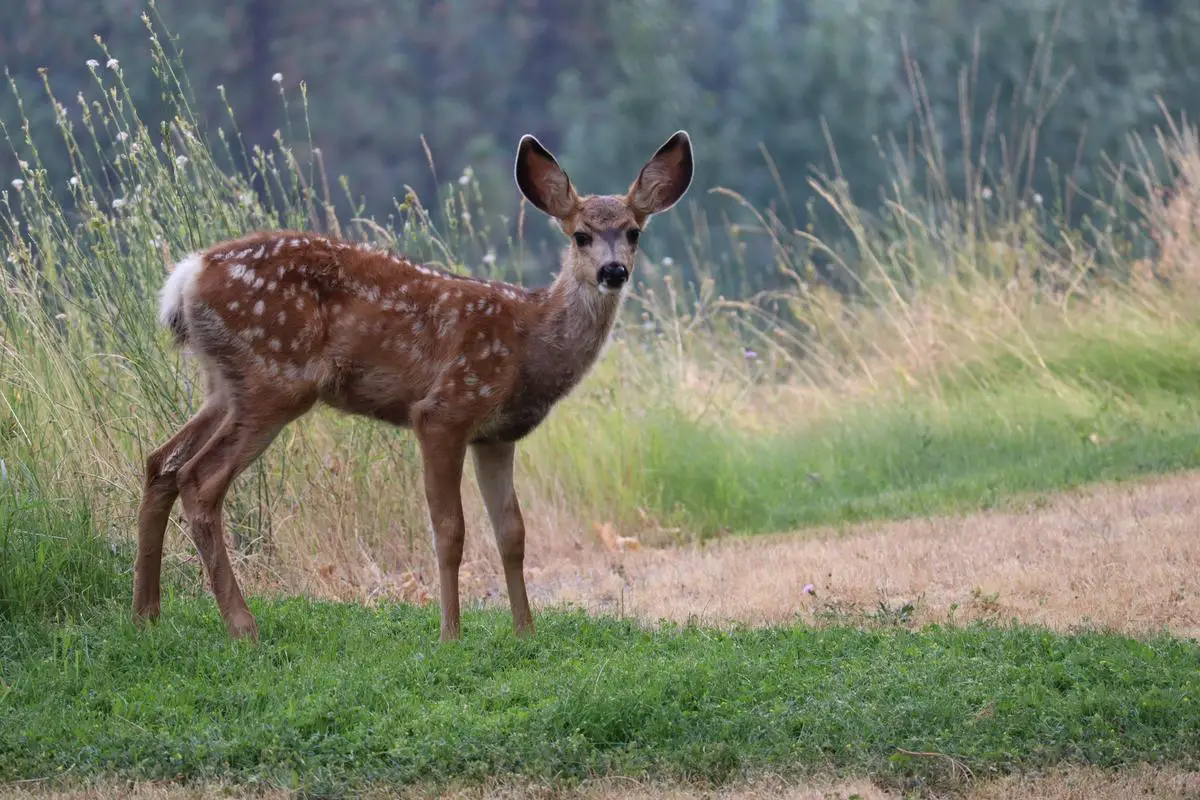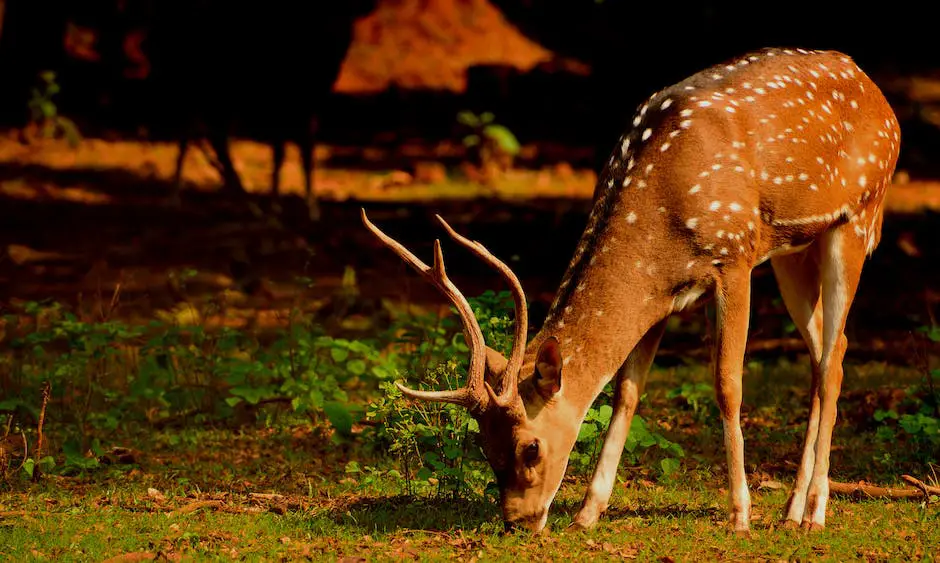Deer are known to be versatile and adaptable feeders, which often leads to the question of whether they can actually eat apples. In this article, we will delve into the various aspects of a deer’s natural diet, apples as a potential food source, and the overall implications of including this fruit in their diet.
Deer’s Natural Diet
Deer are known to be herbivores, meaning they primarily consume plant-based food sources. A deer’s natural diet consists mostly of a combination of woody plants, leaves, grasses, herbs, stems, and shoots. They are also known to enjoy vegetables and fruits, including apples, which are a popular option for supplemental feeding. Additionally, deer are classified as browsers, meaning they feed on the leaves, twigs, and tender plant shoots rather than grazing on grass alone. This varied diet plays an essential role in the deer’s health and overall well-being.Throughout the year, a deer’s dietary preferences and the availability of certain food sources change because of seasonal variations. During the spring, deer tend to focus their grazing on young, tender plants and shoots, which are full of nutrients and relatively easy to digest. As summer progresses, they also feed on a variety of fruits and vegetables that are in season, such as apples, which provide an excellent source of nutrition, including vitamins and minerals. In the fall, deer will continue to eat fruits like apples that have fallen from trees, as well as corn and acorns, which are an essential source of fat and energy for them to maintain their body weight during the cold winter months.Deer have an adaptable natural diet, allowing them to consume various plant-based food sources, including apples. This adaptability enables them to thrive in different environments and conditions. Apples provide essential nutrients and play a valuable role in a deer’s diet, especially during seasonal changes when other food sources may be limited. Understanding the natural diet of deer is crucial not only for their conservation but also for managing the impact they may have on the ecosystem, as deer browsing can influence plant communities and cause subsequent habitat changes.

Apples as a Food Source
Apples are a nutritious and important food source for deer, particularly in the fall when other food options become scarce. They are rich in carbohydrates, providing deer with the much-needed energy to maintain their body temperatures and build up fat reserves in preparation for winter. Additionally, apples supply deer with essential vitamins, minerals, and fiber, which are crucial for their overall health and well-being. The naturally sweet taste of apples also makes them an appealing snack for deer, who primarily consume plant matter and are always on the lookout for delectable treats.
Including apples in a deer’s diet offers several advantages. Deer that have access to apple orchards, fruit-bearing trees in the wild, or even people’s yards, will consume them regularly. The simple consumption of apples can help to improve a deer’s digestion and overall nutrient assimilation as the fiber present in apples acts as a natural probiotic. Apples also provide essential nutrients for antler growth and reproduction, boosting the deer’s overall health and ensuring the wellbeing of future generations.
Deer often encounter apples in their natural habitats, as apple trees tend to thrive in wooded areas that provide an ideal living environment for deer. Additionally, fruit-bearing trees are commonly found in residential gardens and shared community spaces, giving deer further opportunities to access apples. It is important to note, however, that deer do not solely rely on apples for sustenance, as they typically consume a variety of plants, leaves, and stems to maintain a balanced diet. Apples do play a crucial role in supplementing deer’s diet, particularly during lean seasons when other food sources are scarce.

Potential Risks or Drawbacks
Though deer possess adaptable eating habits and can consume a wide array of vegetation, there are some potential risks and drawbacks when it comes to eating apples. One concern is the sugar content found in apples, which, if consumed in large amounts, may lead to an imbalance in their diet and potentially cause digestive issues. As ruminants, deer rely on fibrous plants for their digestive health, and a diet heavy in apples can disrupt this balance. Overfeeding deer with apples could lead to a condition called acidosis, where their stomach becomes excessively acidic, leading to bloat, diarrhea, and even death.
Environmental concerns are another factor to consider when examining the impact of deer eating apples. When deer become accustomed to a specific food source, such as an apple orchard, they may concentrate on that area for an extended period. This can lead to overgrazing and damage to trees and other vegetation in the area. On the other hand, human intervention in feeding deer can negatively affect their natural foraging instincts and make them more reliant on human-provided food sources. This can cause deer to gather near residential areas, posing risks of vehicle collisions and increased conflicts with people.
Another potential drawback to deer consuming apples is the spread of non-native plant species. When deer eat fruit, they often pass the undigested seeds through their digestive system which can then spread to new locations, resulting in the growth of non-native plants. This can ultimately harm local ecosystems and drive out native plant species, which are essential for maintaining a balanced ecosystem and the overall health of local flora and fauna. It is important for humans to ensure that deer maintain a balanced diet and to be aware of the potential consequences of providing them with apples or other fruit.

Photo by divide_by_zero on Unsplash
Effects on Deer Populations and Habitats
In contrast, deer are known to consume various types of fruits and vegetables, with apples being a favored food source among many deer populations. Eating apples can provide deer with essential nutrients and energy that they need to thrive. Additionally, apples offer a valuable water source, helping to keep deer hydrated, especially during drier seasons. While it’s crucial to be mindful of the risks associated with deer consuming apples, it’s equally important to recognize the benefits they can gain from this natural food source.
However, when deer rely heavily on apples as a primary food source, this can potentially lead to changes in their behavior, population size, and impact on their habitats, particularly in forested regions and orchards.
When deer have easy access to apple trees in orchards or forested areas, a significant portion of their diet could shift towards these fruits. This may subsequently have several effects on deer populations and their habitats. Higher nutritional content from the readily available apples might lead to a higher birth rate among deer, and therefore an increase in population size. Consequently, there could be increased pressure on habitats as deer consume other native plants, potentially leading to changes in plant biodiversity and ecosystem function. Moreover, high levels of deer activity around orchards can lead to conflicts with landowners and farmers, who may experience crop losses and property damage due to the foraging habits of deer.
Furthermore, deer feeding on apple trees can have negative consequences for tree health if the consumption is significant. This is particularly true for younger trees that may not have fully developed and could succumb to excessive deer browsing. In forested regions where apple trees are native, this constant foraging pressure by deer on apple trees might contribute to altering species composition and alter the competitive balance between tree species in the long term.
Deer are known to eat various types of fruits in their natural diet, and apples are one such fruit they can consume without harm. While it may seem like a kind gesture to provide deer with apples, it is crucial to consider the broader implications for deer populations and their habitats when assessing their reliance on this food source.

Human-deer Interactions: Feeding Apples
Feeding apples to deer might appear to be a harmless human-deer interaction; however, there are a few points to consider before doing so. By constantly providing deer with apples, they could become habituated to human presence and begin to associate humans with food. This may lead to deer approaching humans or even entering residential areas in search of their next meal. Such behavior could potentially result in dangerous situations, especially during the deer mating season when bucks tend to be more aggressive.
Additionally, the constant feeding of apples by humans may lead to an imbalanced diet for deer. It is important for deer to consume a diverse range of foods to obtain proper nutrition. Favoring apples over other natural food sources may cause nutritional imbalances. In some cases, high sugar content found in apples can negatively affect animal digestion, leading to potential health issues. Furthermore, feeding deer can induce overpopulation in certain areas, which can cause resource depletion, disease transmission, and ecological damage.
It is crucial to consider alternative ways to help deer without causing harm. One such option is to support supplemental feeding programs, typically organized by wildlife management agencies, which ensures nutritionally balanced and adequate food is provided to deer during seasonal food shortages. It is also recommended to refrain from feeding deer in suburban areas, as this may deter them from approaching human settlements. Remember, maintaining a safe distance and allowing deer to rely on natural food sources is the best approach to ensure their health and the health of the ecosystem.

Understanding the impact of apples on a deer’s diet helps to better comprehend the delicate balance in nature. While apples can provide beneficial nutrients and variety to their diet, it is essential to consider the potential risks and effects on both deer and their ecosystem. Finally, being responsible and respectful in human-deer interactions is crucial when it comes to providing supplemental food sources such as apples.